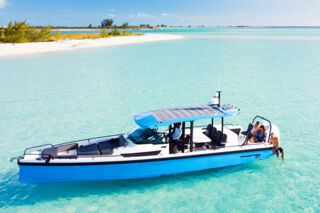Turks and Caicos Snorkeling
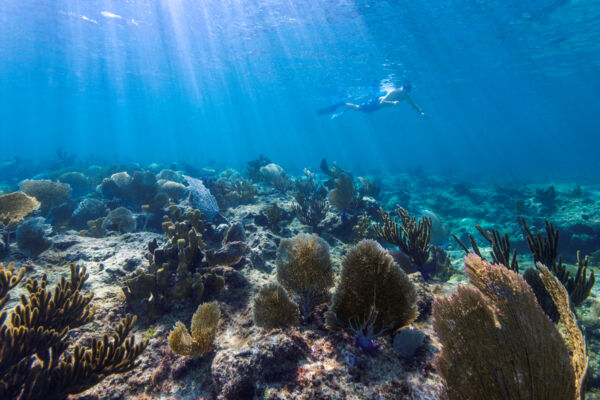
The Turks and Caicos is made up of two groups of islands separated by a deep channel: the Turks Islands and the Caicos Islands. Spectacular ocean water, vibrant reefs, and impressive walls can be found around both island groups, but there is a little difference in what can be seen.
Grand Turk and Salt Cay are located directly adjacent to the deep Turks Island Passage that separates the Turks Islands from the Caicos Islands. Migrating humpback whales are naturally funneled through this channel, so the waters off the Turks Islands offer the greatest chance to spot these majestic mammals.
On the other hand, the Caicos Islands group subterranean plateau is surrounded by an extensive barrier reef that is second to none in the region. Due to their larger and more irregular shapes, these islands also offer a bit more variance in marine terrains and ocean conditions.
Snorkeling Guides by Island




How Do Our Islands Compare?
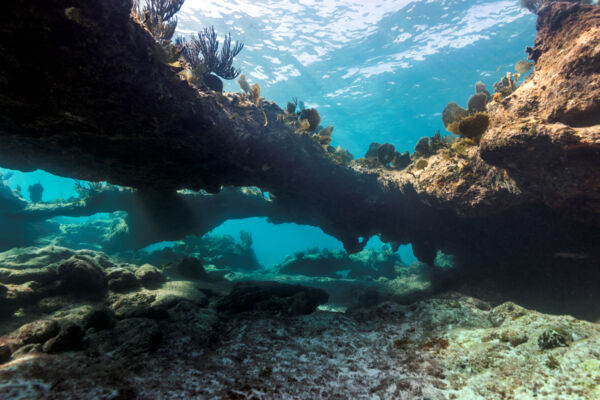
Spectacular coral and sea life can be found off of all of the main islands in the country, however, accessible beach snorkeling sites and the availability of organized snorkeling boat tours does vary greatly by island.
As the busiest and most developed island in the country, Providenciales has by far the most options. Along with having the two centrally located beach reefs of The Bight Reef (Coral Gardens) and Smith’s Reef, there’s a wide selection of remote sites and snorkeling tours available.
Grand Turk has great reefs, but these unfortunately aren’t easily accessible from the shore. If you want to explore anything more than a simple rock patch, a snorkeling boat cruise is the best choice.
The tiny island of Salt Cay offers many small yet interesting sites. Although not the most vibrant reef, the sheltered coast off of Cockburn Town Beach is interesting to explore. A bit more exposed to the constant east-southeast trade winds, North Bay has many small reefs.
On North and Middle Caicos, Mudjin Harbour and Conch Bar Beach offer close access to the vibrant barrier reef, but keep in mind that ocean conditions at these two sites can often be too rough for snorkeling. Three Marys Cays is usually calm and offers a bit of reef to discover, however, this site is limited in both size and variance of wildlife.
Snorkel From the Beach or Take A Cruise?
A good snorkeling cruise will typically give a better experience than a visit to one of the reefs near the beach.
Visibility is almost always far superior, reef and coral formations are better defined, and you’ll also have a greater chance to see some of the larger sea animals.
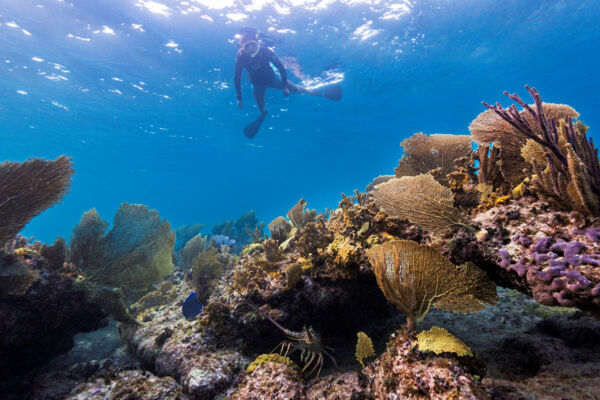
However, one of the decent shore sites (such as the outer reef at Smith’s Reef on Providenciales) will typically offer a wider selection of approachable reef fish and small creatures, along with the obvious benefit of not costing anything.
You’ll probably see more on one of the dedicated snorkeling trips offered by a dive company than you will on the combination beach and snorkeling cruises.
Complimentary snorkeling gear is typically offered on most boat cruises, however, be aware that quality and condition vary. If you have your own equipment, bring it.
Where to Buy or Rent Equipment
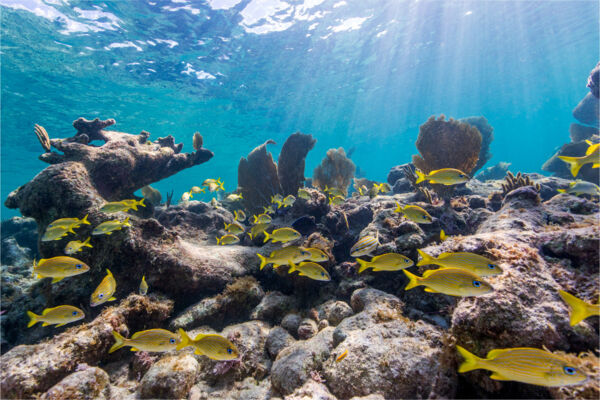
If you plan to do much snorkeling, it’s best to have your own equipment. We highly recommend visiting a dive shop in person (either in your home country or here) so you’ll get proper fitting equipment. Prices will often be a bit higher locally than what the cost for equivalents would be in the USA.
The numerous water sports and dive shops on Providenciales offer a wide selection and quality range of gear, and the Dive Provo shop at the Saltmills Plaza carries the nicest range of snorkel gear on the island.
Grand Turk does offer a decent selection of equipment for sale. The dive shops tend to have a better range of equipment than the gift shops do.
Unfortunately, the other islands in the Turks and Caicos either have a very limited range of snorkeling gear for sale or none at all.
Most of the dive shops throughout the country rent snorkeling gear.
- Don’t touch or stand on anything. Coral is a living animal, and you will likely kill or severely harm any part you contact.
- Make sure not to brush anything with your flippers or gear.
- Don’t take anything. This includes all shells, sand dollars, sea urchins, starfish, and small pieces of coral.
- Don’t heavily coat yourself with sunscreen or other lotions before snorkeling. Use reef-safe biodegradable lotion, or better yet, a rashguard.
- Don’t follow closely or chase any sea life.
- Don’t attempt to feed any sea life.
Snorkeling Charters
